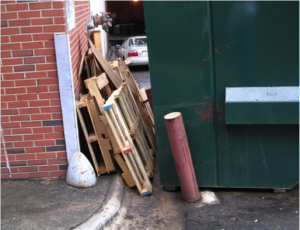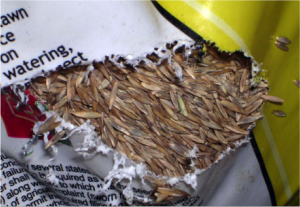Winter months are rodents’ most active time for entering structures as they search for food and shelter from cold temperatures. Now is the time to begin taking steps to rodent-proof structures, both inside and out.
Keep them out! Remember, mice can squeeze through an opening the size of a dime or larger, while rats can get through openings quarter-sized or larger. Locate and seal up any gaps on the building exterior. Depending on the size of the opening, screen, sheet metal, steel wool, or copper scrub pads may be used to seal openings. Caulk may be used in some cases, but may not be as long lasting. Make sure all doors and windows tight fitting with weather stripping. Exterior doors should have door sweeps installed.

Don’t give them a place to hide! Reduce or eliminate unnecessary clutter, both indoors and outside. Keep potential shelters such as piles of wood, bricks or stones away from the foundation of buildings to discourage rodents from setting up camp right outside (See Figure 1). Rooms or closets with lots of clutter can also provide hiding places for rodents. A little organization goes a long way in eliminating those potential homes for rats and mice.

Don’t feed them! Store susceptible food items in sealed, pest proof containers. This includes the foods we eat – like cereal, grains, and rice – as well as pet food, birdseed, and even grass seed (see Figure 2).
Do some landscaping! Rodents can gain access to buildings by climbing across tree limbs and entering the attic or eaves. Trim back trees and shrubs so they are not in direct contact with the foundation so that you can easily spot and address new points of entry that develop.
Taking the steps outlined above can help you make it through the winter months without unwanted guests!
